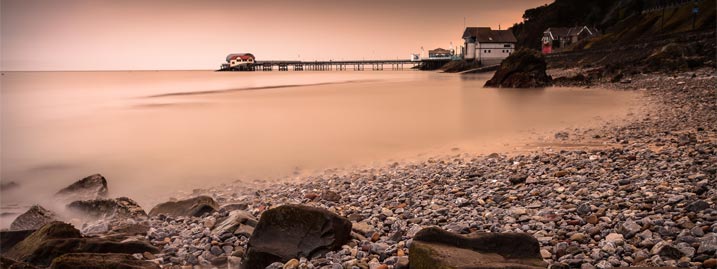
UK Coast Line Is Changing! How Will The Proposed Tidal Lagoons Affect The Coastline Of The UK?
Planning applications have been filed for the world’s first tidal lagoons to be built in the UK. The project is planned to include four lagoons in Wales and two in England and could eventually generate 8% of the UK’s electricity. The project is hoped to last for at least 120 years.
Here in Britain we are completely surrounded by tidal seas, so harnessing the power of the sea and tides seems the obvious way of solving our power problem. We have the second best tidal resource in the world. With water levels rising and falling every day by several metres in height in some places, we have a wonderful opportunity to create clean, low carbon, power from this interaction between the moon and the earth. Until now, tidal energy has been promoted as a source of clean and reliable energy for our island, but the business response has focused on small-scale tidal stream projects. With the natural resources we have in the UK, it is believed that tidal lagoons offer renewable energy at nuclear scale. If the project had been invested in earlier, say by the 1980s, we would probably now be generating cheaper power than any other form of supply.
How would it work?
The giant lagoons would be like big man-made lakes, surrounded by sea walls. The idea is to control when the water flows in and out of these lagoons. When the tide rises, gates in the sea wall will close, causing water to build up outside. When the tide reaches its peak the gates are opened, allowing the water to rush through the turbines in the wall, turning the fan blades and generating electricity. The water will build up inside the lagoon and as the tide falls the gates are closed until, at low tide, the process happens in reverse, with water rushing out of the lagoon and generating more power. This would happen twice a day with each tide and it is estimated that the turbines would be generating power for an average of 14 hours each day.
Where would they be built?
There are plans for six lagoons in total; four in Wales, one in the south–west of England in Somerset and one in the north-west of England in Cumbria. The developer, Tidal Lagoon Power, a Gloucester based, renewable energy company, is currently awaiting a planning decision on its first project in Swansea Bay, which is designed to provide enough zero emission power for 120,000 homes. A decision is expected in June 2015. The second project is planned for Cardiff Bay, with future locations planned at Newport, Colwyn Bay, Bridgwater Bay and West Cumbria.
What would they cost?
Because of the amazing tidal range we have in the UK we have a sustainable way to make use of this natural advantage at a cost comparable to fossil fuel or nuclear generation and less than offshore wind power. The developers always maintained that the projected costs would come down as the projects got under way and already the estimated cost of the Cardiff lagoon is considerably less than the original Swansea project. The beauty of tidal power is that it is predictable. It will not run out like fossil fuel and oil.
Tidal Lagoon Power has announced that they have already met the initial fund-raising target of the Swansea lagoon, raising £200m of investment towards the £750m to £850m cost. They are seeking subsidies for the first 35 years of the project, to recoup its construction and turn a profit, but after that they are predicting that the energy would be very cheap.
The details
For their Swansea project, Tidal Lagoon Power predict that they will generate 14 hours of power per day and supply around 155,000 households for the installation’s expected lifetime of 120 years. They are aiming for grid connection in 2018. They will build a 9.5 km long sea wall, between 5 – 20m in height, with 16 bidirectional tidal turbines, controlling a volume of water equivalent to 100,000 Olympic swimming pools on a daily basis. The majority of the equipment is expected to be manufactured in the UK and assembled at a new Welsh facility. General Electric and Andritz Hydro have been named as the preferred bidders to supply the turbines and components, with a dockside Turbine Assembly Plant employing 100 skilled workers. Those in favour see this project as transforming South Wales’ economy by creating hundreds of jobs in the area. A survey of 2,400 questionnaires, sent to Swansea Bay residents, found that 86% were in favour of the project, which they were promised would attract around 100,000 visitors each year and include amenities for the local community and a unique venue for local, national and even international sports, education and arts. Something that will interest the sportsmen and water sports enthusiasts is the plan to include a national triathlon and water sports centre.
The Cardiff project is hoped to be built in the Severn estuary between Cardiff and Newport. The lagoon would be attached to the shore, with one end around 2km from the entrance to Cardiff Bay and the other 2km from the mouth of the River Usk at Newport. At its widest point it could extend as much as 8km out into the Severn. It would include 90 turbines within a 22 kilometre breakwater, enclosing an area of around 70 sq kilometres, with an average tidal range of 9.21 metres. It is expected to provide enough clean electricity for 1.5 million homes over the project’s lifetime and it is hoped that the planning application will be submitted in 2017, with the project coming online by 2022.
The opposition
With any huge project like this there is bound to be opposition.
Citizens Advice has warned that the plans are “appalling value for money” and urged the Government not to waste bill-payers’ cash on the project. They believe that electricity from the Swansea project would be more expensive than that from any other major green energy project, but the developers counter that argument by admitting that although it would be expensive initially, the costs would decrease dramatically as more schemes were developed.
Angling groups are expressing their worries about the plans. They are concerned that the turbines might harm the fish, so they are anxious that the lagoons are not built too close to rivers.
Some environmental groups, however, are of the opinion that the lagoons should not disturb wildlife too much; on the contrary the lagoons walls could act as artificial reefs for wildlife, while much-needed clean energy is being produced. Many environmental surveys will have to be carried out before this project takes off, but the planners are committed to working in partnership with all nature conservation bodies, in order to minimise environmental impacts.
Further controversy has developed over the plans to quarry rocks for the lagoons in the south-west, where Tidal Lagoon Power wants to reopen the disused Dean Quarry and ship rocks out via a new jetty and breakwater which would be built in a recently-designated Marine Conservation Area.
What affects will these huge projects have on the sailing and water sports fraternity? It will be interesting to see how the plans develop and it is crucial that those of us involved in navigating around our coasts keep an eye on these developments to make sure that our sailing is not compromised in any way.

Author - Dee White